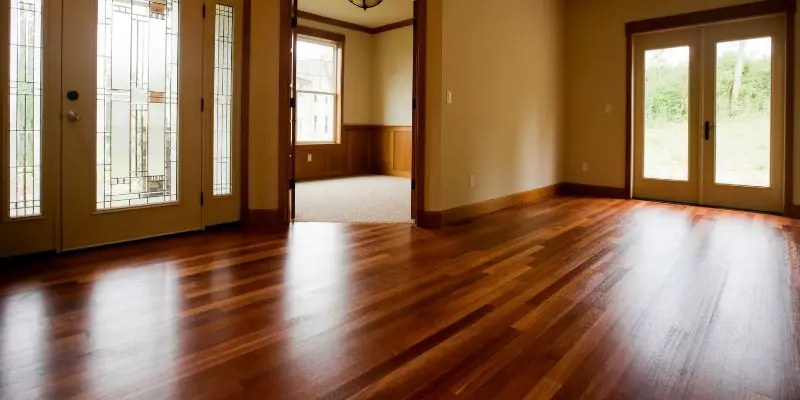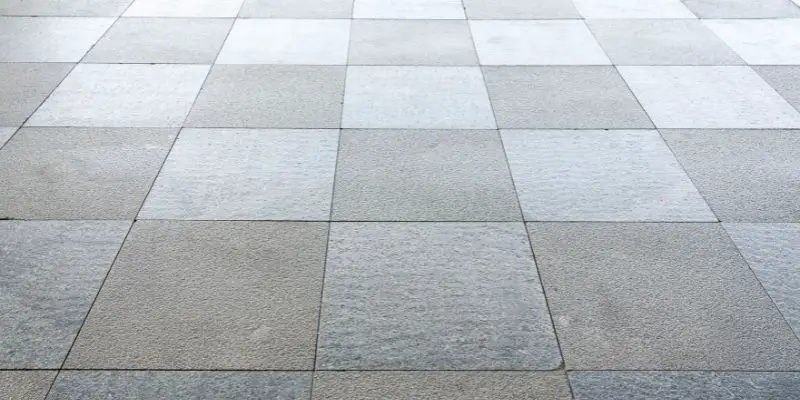Concrete floors are durable and low maintenance, while wood floors offer warmth and aesthetic appeal. Concrete floors are known for their durability and low maintenance.
On the other hand, wood floors are beloved for their warmth and aesthetic appeal. When deciding between these two flooring options, it’s essential to consider your requirements and preferences. We will explore the advantages and disadvantages of concrete floors and wood floors, helping you make an informed decision for your space.
By understanding the unique characteristics and benefits of each flooring type, you can choose the option that best suits your needs. Whether you prioritize durability and ease of maintenance or prioritize a cozy and visually appealing floor, there is a choice that will align with your goals and style. Let’s delve deeper into the considerations for concrete floors versus wood floors.
Benefits Of Concrete Floors
Concrete floors have gained popularity in recent years as a stylish and practical flooring option for both residential and commercial spaces. With their numerous benefits, it’s no wonder why homeowners and designers are opting for concrete over traditional wood floors. In this article, we’ll explore some of the key advantages of concrete floors and why they might be the perfect choice for your next flooring project.

Durability And Longevity
When it comes to durability and longevity, few flooring options can rival concrete. Concrete floors are incredibly strong and resistant to wear and tear, making them ideal for high-traffic areas such as kitchens, living rooms, and commercial spaces. Unlike wood floors that can be easily scratched or damaged, concrete floors can withstand heavy foot traffic, furniture movement, and even the occasional accidental spill without showing signs of wear. With proper installation and maintenance, concrete floors can last for several decades, outlasting many other flooring materials.
Low Maintenance And Easy Cleaning
Concrete floors are not only durable but also low maintenance. Unlike wood floors that require regular sanding, refinishing, and polishing to maintain their appearance, concrete floors can be easily cleaned with basic cleaning tools such as a broom, mop, or vacuum cleaner. They don’t require special sealants or coatings to protect them from stains or moisture, further reducing the need for costly upkeep. With their smooth and non-porous surface, concrete floors are resistant to spills, stains, and allergens, making them an excellent choice for homes with pets or individuals with allergies.
Versatility In Design Options
One of the major advantages of concrete floors is their versatility in design options. With advances in decorative concrete techniques, concrete floors can now mimic the look of various materials such as natural stone, wood, or tiles. The range of colors, patterns, and textures available allows you to create a unique and personalized look that complements your overall interior design. Furthermore, concrete floors can be customized with different finishes, such as acid staining, microtopping, or scoring, to add depth, visual interest, and enhance the overall aesthetics of your space.
Benefits Of Wood Floors
Wood floors are a timeless and popular choice for homeowners due to their many benefits. They offer warmth and natural beauty, a variety of styles and finishes, as well as comfort underfoot and noise reduction. Let’s take a closer look at these advantages.
Warmth And Natural Beauty
One of the main benefits of wood floors is the warm and inviting atmosphere they create in any space. Unlike cold concrete floors, wood floors add a touch of coziness that instantly makes a room feel welcoming. The natural beauty of wood also brings a sense of elegance and sophistication to your home.
Variety Of Styles And Finishes
Wood floors offer a wide range of styles and finishes to suit any design preference or decor theme. Whether you prefer the sleek and modern look of hardwood floors with a glossy finish, or the rustic charm of distressed wood, there is a style to match your taste. From light to dark shades, the variety of colors available allows you to create the perfect ambiance for your space.
Comfort Underfoot And Noise Reduction
In addition to their aesthetic appeal, wood floors provide comfort underfoot. The natural elasticity of wood offers a slight give when walked upon, making it more comfortable to stand or walk for extended periods. This is especially beneficial for those who spend a lot of time cooking in the kitchen or standing at a standing desk. Furthermore, wood floors absorb and dampen sound, reducing noise levels and creating a quieter environment in your home.
Overall, wood floors not only enhance the visual appeal of your space but also offer practical benefits such as warmth, style versatility, comfort, and noise reduction. Consider these advantages when deciding between concrete and wood floors for your next home improvement project.
Factors To Consider In Choosing
Factors to consider when choosing between concrete floors and wood floors include durability, maintenance requirements, cost, aesthetic appeal, and the specific needs of the space in terms of functionality and design. Both options offer advantages and disadvantages, so it is important to weigh these factors carefully before making a decision.
Choosing between concrete floors and wood floors can be a daunting decision to make. Both options have their own set of advantages and disadvantages, so it’s crucial to carefully evaluate your specific needs and preferences. This blog post will explore some key factors to consider when choosing between these two flooring options.
Cost and Installation
One of the primary considerations when choosing between concrete floors and wood floors is the cost and installation process. Let’s break down the financial and installation aspects of each option.
1. Cost:
Concrete Floors: Installing concrete floors can be a cost-effective option in the long run. While the upfront cost may be higher compared to wood floors, concrete floors require minimal maintenance, which can save you money over time. Additionally, concrete floors are typically more durable and can withstand heavy foot traffic without the need for frequent repairs or replacements.
Wood Floors: Wood floors come in a wide range of prices, depending on the type of wood and the installation method. While some types of wood can be expensive upfront, wood floors can add value to your property and be more cost-effective over time. However, they might require more regular maintenance and occasional refinishing to preserve their appearance and durability.
2. Installation:
Concrete Floors: Installing concrete floors often involves a more complex process compared to wood floors. It requires the expertise of professionals to pour and level the concrete, which may result in higher installation costs. Additionally, concrete floors need time to cure and dry before they can be used, which can be a temporary inconvenience during the installation process.
Wood Floors: Installing wood floors can be a less time-consuming and straightforward process compared to concrete floors. Depending on the type of wood flooring chosen, it can be installed using different methods, such as glue-down, nail-down, or floating. This versatility in installation options allows for greater flexibility and potentially lower installation costs.
Moisture and Climate Considerations
Another crucial factor to consider when choosing between concrete and wood floors is the moisture resistance and climate adaptability of each material. Let’s delve into the impact of moisture and climate on both options.
1. Moisture Resistance:
Concrete Floors: Concrete is inherently resistant to moisture, making it an excellent choice for areas prone to dampness, such as basements or bathrooms. However, it’s important to note that concrete floors are not entirely impervious to moisture and may require sealing to prevent water damage or staining.
Wood Floors: Wood floors are more susceptible to moisture and can be damaged by excessive humidity or spills. Although certain types of wood flooring, such as engineered wood, offer improved moisture resistance, it’s crucial to take preventive measures like promptly cleaning up spills and maintaining proper indoor humidity levels.
2. Climate Considerations:
Concrete Floors: Concrete floors are well-suited for regions with extreme temperatures or fluctuating climate conditions. They can help regulate indoor temperatures, providing efficient thermal mass during hot summer months and retaining warmth during colder seasons.
Wood Floors: Wood floors can expand or contract in response to changes in temperature and humidity. In areas with high humidity levels or significant temperature variations, wood floors may require careful maintenance and monitoring to minimize the risk of warping, gapping, or cupping.
Aesthetics and Personal Preference
Finally, it’s essential to consider the aesthetics and personal preference when choosing between concrete floors and wood floors. After all, the appearance and feel of your flooring choice can greatly impact the overall ambiance of your space.
Concrete Floors: Concrete floors offer a sleek, modern, and industrial aesthetic that has become increasingly popular in contemporary design. They provide a versatile canvas for various decorative finishes, such as acid staining, polishing, or epoxy coatings, allowing you to achieve a unique and customized look to suit your style.
Wood Floors: Wood floors exude warmth, elegance, and timeless appeal. They come in a wide range of wood species, each with its unique grain patterns and colors, giving you the freedom to choose a flooring option that complements your interior decor and personal taste.
In conclusion, when choosing between concrete floors and wood floors, it’s important to consider factors such as cost, installation, moisture resistance, climate adaptability, aesthetics, and personal preference. By carefully assessing these aspects, you can make an informed decision that aligns with your budget, lifestyle, and long-term flooring needs.
Comparison Of Maintenance
When choosing between concrete floors and wood floors, considering the maintenance requirements is essential. Understanding how cleaning, upkeep, repairs, and longevity differ between the two types of flooring can help you make an informed decision for your home or business. Let’s delve into the details of maintenance for concrete floors and wood floors.
Cleaning And Upkeep
Cleaning and upkeep tasks are integral to maintaining the appearance and longevity of any flooring. Concrete floors, known for their durability and smooth surface, are relatively easy to clean. Regular sweeping and occasional mopping with a pH-neutral cleaner can keep concrete floors looking their best. However, it’s important to avoid abrasive cleaning agents to prevent damage.
On the other hand, wood floors require more careful attention when it comes to cleaning. Wood is a natural material susceptible to moisture and temperature changes, requiring special care to prevent warping, swelling, or shrinking. Regular sweeping or vacuuming, followed by mopping with a recommended wood floor cleaner, helps remove dirt and debris. To protect the wood’s finish, it’s advisable to avoid excessive moisture and use area rugs in high traffic areas.
Repairs And Longevity
When it comes to repairs, concrete floors have the advantage of being highly durable and resistant to wear and tear. Minor scratches or chips can typically be easily fixed with a concrete patch or sealant. However, if major damage occurs, repairing concrete floors can be more extensive and may require professional assistance.
Wood floors, while adding a warm and inviting touch to any space, are more prone to scratches, dents, and wear. However, the advantage of wood floors lies in their repairability. Minor surface scratches can often be buffed out or concealed with touch-up products, while deeper scratches and damaged areas can be sanded and refinished. This allows wood floors to maintain their original beauty even after years of use.
In terms of longevity, both concrete and wood floors can last for decades with proper maintenance. Concrete floors, being highly resistant to heavy foot traffic and requiring minimal upkeep, have the potential to last a lifetime. On the other hand, wood floors, while prone to wear, can also offer longevity if properly maintained. Regular cleaning, preventive maintenance, and occasional refinishing can ensure wood floors withstand the test of time.
In summary, concrete floors and wood floors have different maintenance requirements. Concrete floors are relatively easy to clean and require minimal upkeep, while wood floors need special care to prevent damage and maintain their appearance. When it comes to repairs, concrete floors may require professional attention for more significant damage, whereas wood floors can be easily repaired and refinished. Both flooring options have the potential for longevity when maintained properly, making them worthwhile investments for any space.

Environmental Impact
When it comes to choosing the flooring for your home or office, it’s important to consider the environmental impact of the materials you select. Concrete floors and wood floors are two popular options, each with its own set of advantages and disadvantages. In this article, we will explore the environmental impact of both choices, focusing on sustainability, carbon footprint, and energy efficiency. Let’s dive in!
Sustainable And Eco-friendly Options
When it comes to sustainability and eco-friendliness, wood floors have a clear advantage. Wood is a renewable resource that can be sourced from responsibly managed forests. This means that for every tree cut down, several more are planted in its place. Additionally, wooden floors can be recycled or repurposed, reducing the amount of waste that ends up in landfills. On the other hand, concrete floors are made from non-renewable resources such as cement, sand, and gravel, which have a significant environmental impact during the extraction and production processes.
Carbon Footprint And Energy Efficiency
The carbon footprint of a flooring material refers to the amount of greenhouse gas emissions released into the atmosphere during its lifecycle. When it comes to carbon footprint, wood floors have a lower impact compared to concrete floors. Trees absorb carbon dioxide from the atmosphere as they grow, effectively acting as carbon sinks. By using wood as a flooring material, you are keeping carbon locked away from the atmosphere. Concrete production, on the other hand, is responsible for a significant amount of carbon dioxide emissions. The process of manufacturing cement, the main component of concrete, releases large amounts of carbon dioxide into the atmosphere.
Energy efficiency is another important aspect to consider when thinking about the environmental impact of your flooring choice. Wood floors have excellent thermal properties, acting as natural insulators. They can help regulate the temperature in your space, reducing the need for heating or cooling. Concrete floors, on the other hand, tend to absorb and retain heat, making them less energy efficient. Additionally, the production of cement, which is energy-intensive, contributes to the overall energy footprint of concrete floors.
So, when it comes to the environmental impact, it’s clear that wood floors have the upper hand. They are sustainable, eco-friendly, have a lower carbon footprint, and offer better energy efficiency compared to concrete floors. However, it’s important to note that there are other factors to consider, such as durability, maintenance, and cost, before making your final decision. Evaluate all aspects and choose the flooring option that aligns with your priorities and values!
Frequently Asked Questions Of Concrete Floors Vs Wood Floors
Are Concrete Floors Better Than Wood?
Concrete floors are generally preferred over wood floors for several reasons. They offer durability, low maintenance, and are resistant to moisture and pests. Concrete floors also provide better thermal insulation and are more environmentally friendly. Additionally, they can be customized with various finishes for a stylish look.
Is Concrete Cheaper Than Wood Floors?
Concrete floors are generally cheaper than wood floors. This is because the cost of materials and installation for concrete is usually lower than that of wood. Additionally, concrete floors tend to require less maintenance and have a longer lifespan, making them a cost-effective option.
Is It Good To Have Concrete Floors In Your House?
Concrete floors can be a good option for your house. They are durable, low-maintenance, and provide a modern look. Additionally, concrete floors can help with indoor air quality, as they don’t trap dust or allergens. With proper sealing and finishing, concrete floors can be both functional and stylish.
Which Is Better Wood Or Concrete Slab?
Wood and concrete slabs both have their advantages. Wood is generally cheaper, easier to install, and provides a warmer feel. Concrete slabs are more durable, have better resistance to moisture, and can support heavy loads. The choice depends on your preferences, budget, and specific needs.
Conclusion
Ultimately, choosing between concrete and wood floors comes down to personal preference and specific needs. Concrete floors offer durability, low maintenance, and a sleek, industrial look. On the other hand, wood floors bring warmth, natural beauty, and a cozy ambiance to any space.
Consider your lifestyle, budget, and desired aesthetic to make the best decision for your home or business. With proper care, either option can provide a stunning and long-lasting flooring solution.



6 thoughts on “Concrete Floors Vs Wood Floors: The Ultimate Showdown!”